“It takes about as many years to get out of a drought as it took to get into it,” says Laura Haskell, the Division of Water Resources Drought Coordinator in Utah. And for Utah, it’s been since 2000 that we’ve been in some degree of drought.
Wet winters like the winter of 2023 help improve conditions, and it will take many more wet winters to help the state get out of drought conditions. That all being said, there are levels of severity of drought, and the state has fluctuated from a D0 level (abnormally dry) to D4 (exceptional drought) for the last few decades. When you hear “we’ve been in a drought for 20 years” remember that there are levels of drought, and the state hasn’t been in a D4 drought for 20 years straight, we’ve cycled through all the levels in different years.
Don’t let drought talk send you into a panic or throw your hands up and give up on conserving water. As with most problems, a thoughtful, balanced approach will help us reduce water waste and improve drought conditions in the state.
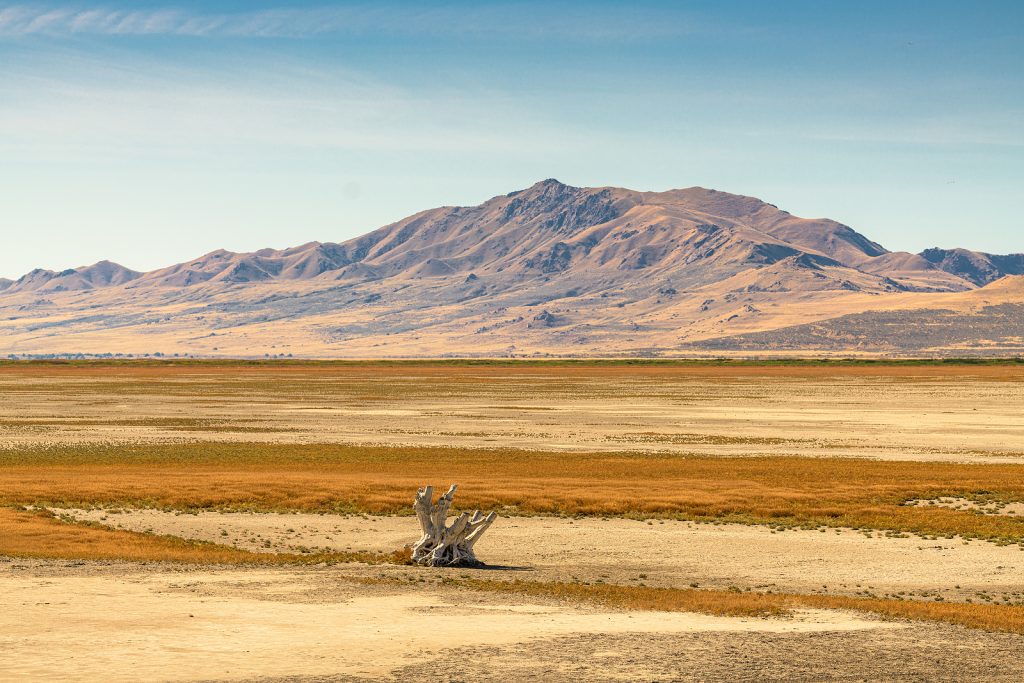
General Utah Drought Questions
Keep reading as we break down the most popular questions about Utah’s drought.
What causes the drought in Utah?
As with most questions about nature, the answer to this question is multifaceted. The drought isn’t caused by any single influence, but rather a combination of several factors that are both in our control and not in our control.
TRENDING: Xeriscaping Ideas For Your Utah Home
First, remember, Utah is a desert. So expecting Oregon levels of precipitation is just unreasonable. The high temperatures in the summer don’t help with the drought either, but again, hot weather is expected in a desert climate. Humans trying to live in a desert climate are going to have to be creative about how to get water and how to conserve it. Especially in Utah where a whopping 20% of the land is farmland, where water is used even more abundantly than in residential areas.
Add in the fact that Utah is a rapidly growing state, with nearly 40,000 residents migrating to the state between July 2021 and July 2022, and likely to hit 5.5 million residents in 40 years, the state will have even more demand for water. Between the desert climate, a growing population, and a large portion of the state being agricultural, it’s little wonder that the state is in a drought.
How does the drought impact Utah’s communities and industries?
Communities face several negative effects of a drought. From dusty, dry air conditions that can cause health concerns for even healthy people to increases in diseases transmitted by insects and animals (think West Nile Virus), communities in Utah don’t fare well in extreme droughts.
Agriculture is one industry that is impacted by drought, some farmers say they are planting as little as 10% of their full acreage. This means that crops that feed ranch animals are in short supply, with feed prices so high farmers and ranchers are selling some of their livestock to pay for the higher-priced feed. With less feed and fewer animals, ranchers and farmers aren’t buying seeds, upgrading their machinery, or using fuel. That means the local economy isn’t getting that money, and the whole community suffers. Additionally, it affects recreation and tourism, providing 1 in 11 jobs in the state in this industry alone.
What are the current drought conditions in Utah?
Remember, droughts are rated from D0 to D4, and while Utah has been in a drought for over two decades, there have been times when the drought was closer to a D0 and times when it was closer to a D4.
LEARN MORE: Watering Guide For Utah Yards
Droughts are cyclical, so even if the drought was bad in the summers of 2021 and 2022, it might not be as bad in 2023. And so far this winter, that might just be the case. Utah’s snowpack is at an all-time high, with some areas at 240% of normal for this time of year. That snowpack will help come spring and summer, but we won’t know how much the wet winter of 2023 will impact the drought for some months.
How can residents of Utah conserve water during a drought?
Small actions make a difference, especially when everyone works together. Simple changes like practicing efficient irrigation, implementing more drought-tolerant landscape features, shortening your shower, and optimizing your sprinkler use, can all help with the drought.
What are the long-term effects of drought on Utah’s ecosystems?
Long-term droughts can lead to reduced spring runoff, which means shallower streams, and that can lead to unhealthy conditions for the aquatic and riparian species that live in streams. The lack of runoff leads to the degradation of other habitats that negatively affect the wildlife that lives in them.
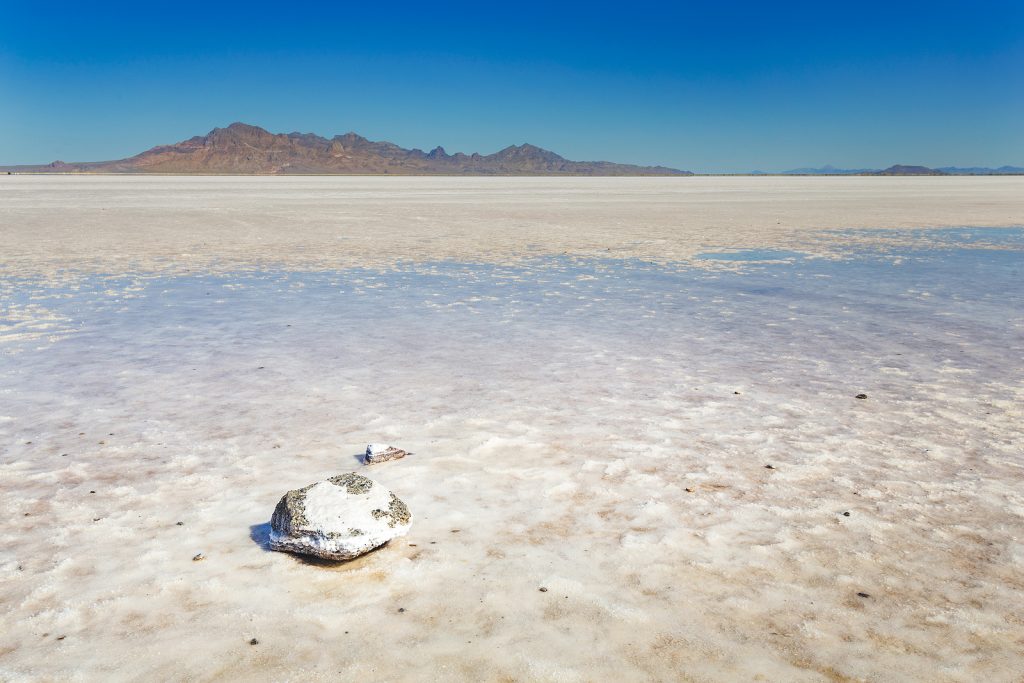
How does drought in Utah affect the snowpack and skiing industry?
Drought can lead to less snow in the winter, which means less snowpack, which means less consistent skiing conditions. This affects more than just skiers’ experience on the slopes, but the whole economy that surrounds skiing.
RELATED: Our Xeriscaping Portfolio
How does drought in Utah affect the recreation industry?
With lower lake levels, recreation is difficult or even impossible. From shallow waters making boating impossible to reduced numbers of fish, some of the best parts of Utah’s recreation are affected during bad seasons of the drought.
What can be done to mitigate the impacts of drought in Utah?
Obviously, water conservation is a huge part of mitigating the impact of the drought on Utah. But investing in water-efficient technologies and early warning systems for drought can help Utah conserve water.
TRENDING: Your Utah Flooding Preparedness Checklist
How can the public stay informed about drought conditions in Utah?
Water conservation and drought conditions are likely on the minds of most Utahns most of the time, especially during particularly dry spells. To stay up to date, you can check the Utah Department of Natural Resources website, or follow them on Twitter where up-to-date information is posted regularly.
Utah’s Drought And Your Landscaping Questions
Now that we’ve talked about the general implications of the drought, let’s talk about how it impacts your yard.
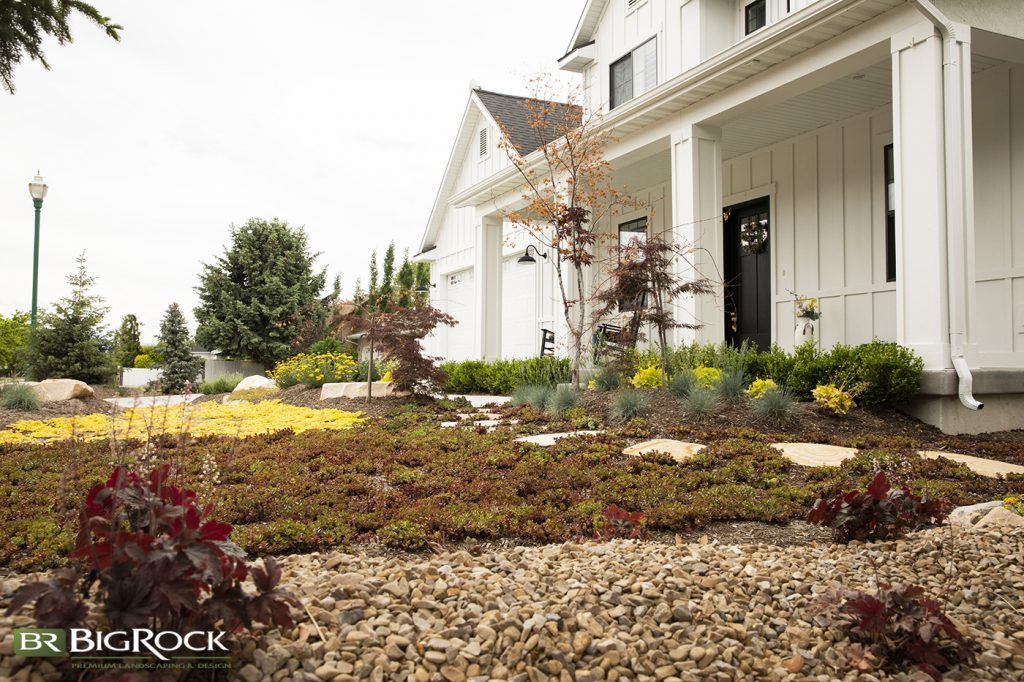
How devastating is a drought in your yard? How does it affect your yard?
Drought can affect your yard by drying out the grass, wilting on plants and trees, sagging or closed flowers, or footprints left in the grass after you walk on it.
DISCOVER: Drought Resistant Parking Strip Ideas For Utah
Is there anything you can do to prepare your yard for drought-related issues?
While a wilting yard may make you feel powerless, there is actually a lot you can do to support your yard through a drought– keeping your lawn equipment sharp, watering infrequently but deeply, mulching your plants well to retain moisture, and making sure to fertilize with a high-nitrogen fertilizer.
What are the biggest mistakes people make when it comes to taking care of their yard during a drought?
A drought is not the time to plant anything new; it takes extra water for plants to recover from the stress of being transported and planted in a new place. Another mistake, on the other end of the spectrum, is to pull up everything green and replace your lawn with gravel or pavers. If you genuinely love that look, go for it. But a dry summer where your grass browns a little and your shrubs look a little dry is not a reason to overhaul your yard.
What are some signs that my landscape is suffering from drought stress?
If your lawn goes from a lush green to a blueish gray, or the grass blades start to curl or wilt, your lawn is likely overstressed from the drought. If your trees are losing leaves in the middle of the summer, the leaves are turning yellow, branches are dying, or you notice bark cracks, your tree might be suffering.
Where do people waste the most water with their landscaping?
The biggest water wasters in your yard are likely not watering alone, but watering ineffectively. From watering at the wrong time of day to leaks in your hose or irrigation systems, or overwatering, wasting water happens not because you are using water, but because you aren’t maintaining your equipment or watering at the right time of day.
With the drought getting better, should I reconsider doing a landscaping remodel?
This is a tricky question, and likely requires a personal visit from our team to give you the best answer for your yard and your vision. However, wetter conditions do make it easier to add new plants to your yard (like sod, trees, or bushes). So now might be the best time to consider your next landscaping project.
What are some of the best drought-tolerant landscaping plants for Utah?
A good rule of thumb for choosing plants for your Utah home is opting for plants that are native to the area. Yarrow, rose of Sharon, yucca, ornamental grasses, Jupiter’s beard, and lavender are good options for your garden beds. Ash, cypress, elms, maples, oaks, and pine trees are all good options for Utah homeowners. But if you aren’t sure which plants will work best in your yard with your design aesthetic, you’ll want to hire a landscaping company to help you decide.
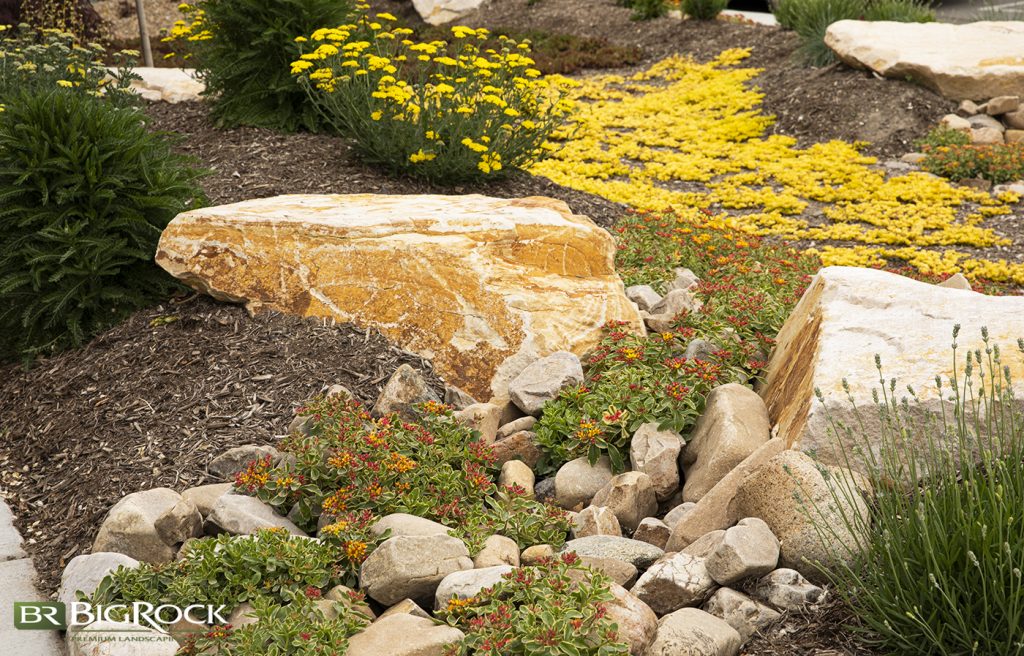
What are some tips for xeriscaping in Utah?
Start your xeriscaped yard by finding succulents, cacti, and drought-tolerant ground cover that match the style you are looking for (yucca and ornamental grasses are great additions for a more modern look, while lavender and rose of Sharon might be better matched for a more traditional look). Make sure that your plants are well-mulched to help the soil retain moisture. Then add in your hardscape, either pavers, gravel, cement, or some combination of those. Xeriscaping allows for additions like a custom fire pit or more patio space, so make sure to find a landscape professional who can help your yard still feel welcoming and fun as you install your xeriscaping.
What is the best time of year to xeriscape in Utah?
Fall is the best time to install a xeriscape landscape because the plants are either dormant or going dormant. This allows the plant the winter and spring to become more established before the hot summer months hit.
What are some common mistakes people make when xeriscaping in Utah?
Most of the mistakes or problems that show up when Utah residents xeriscape their yards are due to a lack of professional design and support. Three main mistakes Utahns make when they xeriscape is not creating a suitable weed barrier or not maintaining weed growth, becoming impatient when plants don’t fill in as fast as non-drought tolerant plants (drought tolerant plants take longer to grow, which is part of the reason they are drought-tolerant!), or not hiring a professional to help design the xeriscaped yard. Xeriscaping takes careful design and is based on water use, soil type, and sun exposure.
What are some landscaping irrigation tips for Utah?
Generally speaking, infrequent but deep watering is the rule for watering in Utah. Plant trees and shrubs with similar water needs close together so you can water them together, ensuring that you aren’t overwatering a plant that doesn’t need it. Drip irrigation is a great way to avoid losing water due to sprinkler spray, and helps the water get deep into the soil to encourage deep root growth. Make sure to regularly check your sprinkler and irrigation systems for leaks or other problems, and as always, pay attention to how your yard is responding to your watering schedule.
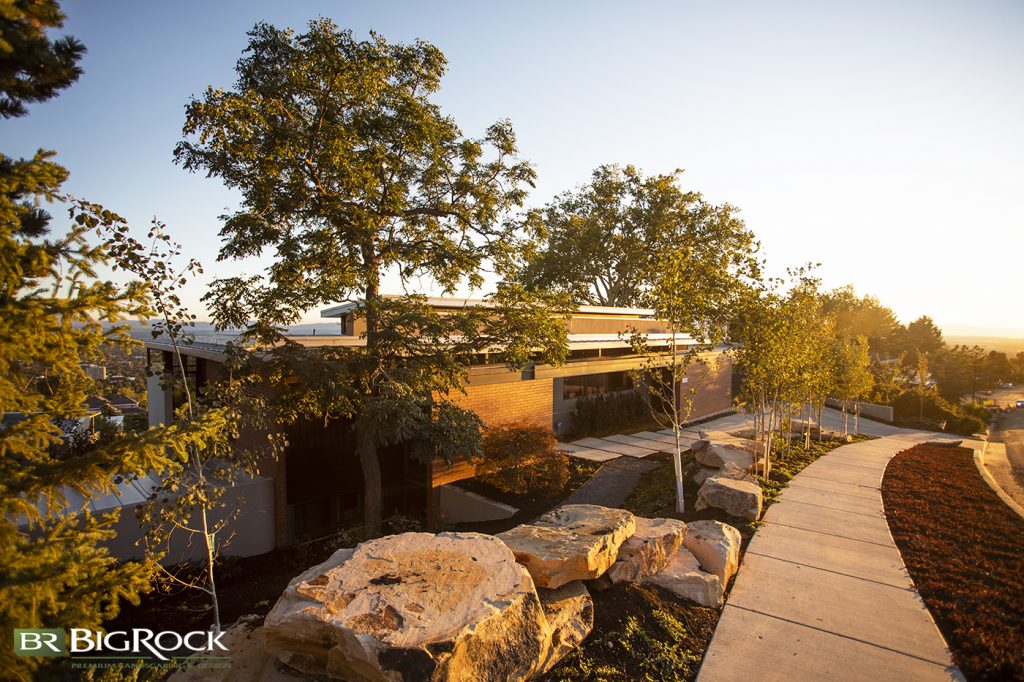
What are some landscaping drought tolerance tips for Utah?
There are plenty of small steps you can take to ensure your landscape is drought-tolerant. Look for plants that are native to high elevation, dry climates, and use those as much as you can in your landscape design. Set up a sprinkler or irrigation systems that are connected to the weather in your area, ensuring you aren’t watering on a rainy day. Consider adding a drip irrigation system to your garden and flower beds. Water your plants, trees, and lawn deeply to help roots grow deep and become less susceptible to heat.
Still Have Drought Questions? We Have Answers!
There’s so much to consider for your landscaping during a drought, especially in Utah. How often should you water? What plants can you add to help your landscape stay green even in dry seasons? Should you overhaul your whole yard in order to xeriscape? How can you enjoy your yard during the dry months? What features can you add to your landscape to make it drought-tolerant without ripping out all your grass?
We get it, and while we can give you basic answers to general questions about landscaping during a drought, to give you the best ideas, we need to see your space and get a feel for your vision.
That’s why contacting us today before the dry season hits is the best way to make sure you are ready for anything the dry summer months bring. The team at Big Rock Landscaping can help you decide if xeriscaping is right for you, or how to maintain your lawn with less water. Whatever your drought design dilemma may be, our team of experts is here to help! Don’t let another summer go to waste, find out how we can bring your yard to life today!

